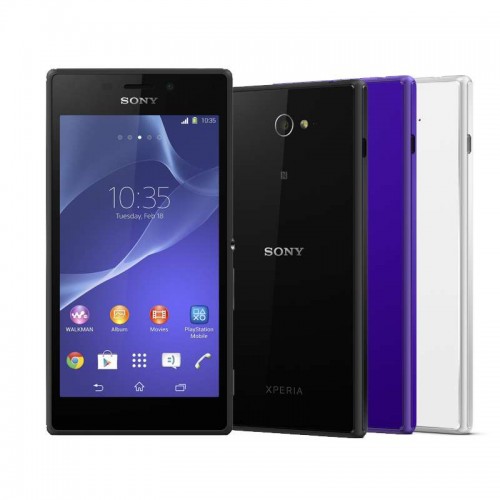

PHOTO:
Ana Flávia
If you work for a business that deals with physical products (appliances, business machines, consumer devices, medical products, but also offices, parking space, etc.) I have a question for you: when was the last time you asked your product how it was doing? Or whether it was bored, because its owner barely used it? Or whether it’s hurting, as its owner was using it wrong? Or whether it’s about to break down, as its owner was using it too much?!?!!
Sound silly? Hear me out.
Since the dawn of competition, businesses of all sizes have known the key to staying relevant in the market was understanding their customers’ needs. Whether achieved through good old chitchat in the store around the corner, or through an elaborate research project in the Customer Experience department using the latest messaging and AI technology to gauge sentiment — businesses then and now know to listen to the customer — to give customers a voice. If anything, you could argue the significance of this is only increasing in the age of globalized competition.
A whole industry has formed around the “Voice of the Customer” (VoC) over the years. Vendors offer software tools and consulting services to help businesses elicit and track learnings from customers. Some go further and include the “Voice of the Employee” (VoE) for internal operational improvements, or the “Voice of the Market” (VoM) for “enterprise reputation capture and analysis and insights for product or services development,” as analyst firm Omdia puts it in its 2020 Market Radar on AI-enabled Experience Management Platforms.
In its first ever Magic Quadrant for Voice of the Customer in 2020, Gartner analysts wrote, “VoC applications enable application leaders supporting CX to enhance the way they listen to and understand customers. The insight generated creates actions that help improve customer loyalty and provide measurable business benefit.” The insight they are referring to stems from data, which they classify into three categories:
- Direct feedback — Feedback consumers intend to provide directly to the organization when either asked to do so or motivated by their experience. This typically takes the form of a survey, a complaint, market or user research, or a focus group/panel.
- Indirect feedback — Feedback derived from instances where the customer is speaking about an organization without specifically intending to furnish feedback to the organization. This includes collecting insight from review sites, social networks and customer care interactions via phone, email and chat sessions.
- Inferred feedback — Operational and transactional data associated with a CX or customer journey, such as a website’s clickstream data, commerce purchase history, mobile app location data, or contact center operational data.
Experience Management Is Missing an Important Constituent: The Product Itself
Customers. Employees. The Market. Do you see what I’m seeing? We are missing out on an important part of the equation between a customer and a business — the product. It is time to start giving it a voice.
Before understanding why this is a good idea, let’s revisit the current state. There is customer behavior (and proactive surveys), which create data, which becomes knowledge. With the right approach, you will eventually get insight, which then influences what you change as a business in terms of how you service your customer. If all goes well, that change will improve the customer experience. Let’s call this the CX optimization circle.
Companies selling digital products, such as web tools for project management or ERP software, long ago started adding their products to this circle. By adding log points (a process that software engineers call “instrumenting the code”) as an additional data feed, they can “hear” directly from their products about customer usage and product performance. So rather than relying on what the end users (customers, employees, partners, vendors) are saying about how they use a product, the product itself now “speaks.” And the product may even contradict the user. Your customer might report “I’m using your product 2-3 times a week,” but the product knows better and tells you “actually, they use me more like 5-6 times, and the trend goes up.”
Thanks to technology advancements in recent years in the context of the Internet of Things, or IoT, with a plethora of smaller and cheaper sensors and other hardware and much more reliable connectivity than was possible before, we can finally accomplish the same for physical products. By giving products a “voice,” businesses can expedite the CX optimization circle. This typically is a continuous process throughout the lifetime of a product generation.
By listening to the Voice of the Product, businesses have not only MORE data to turn from knowledge to insight, but that insight also comes from a source that cannot, through its programmed nature, “distort” the truth through language or emotion like humans do. Cognitive biases can have a tremendous impact on how much of what a user tells about their user experience is actually rooted in objective truth vs. individual (mis-)perception. By listening to your product, you will get both sides of the story, and your view will be much more complete and accurate. Use it to build better products, to deliver better services, and systematically understand product usage in order to drive change.
Related Article: Empathy Fuels Today’s VoC Programs
Tying the Voice of the Customer and the Voice of the Product Together
The key to weaving the Voice of the Product into the circle of CX optimization is to make the product “heard” outside of just the product group, where IoT solutions typically sit today. CX professionals need access to this source of information, too. In some instances, you want to be ahead of the customer in communicating about their needs; e.g., when your product tells you it needs a repair or new parts soon. In other instances, when responding live to an inbound customer contact, you want to compare what they are saying with what the product is saying about an incident. And finally, in hindsight, you want to use both the VoC and the VoP (think of “surveying your product”) to identify trends, new patterns of behavior (of both the customer and the product), or changes in usage, in order to improve your product and improve your CX. This completes our circle:
Take cleaning robot maker iRobot. Its connected mopping and vacuum robots are connected to the internet so the user can manage cleaning runs through the app. But they are also connected to the internet for the contact center, so when a customer calls with a question, the customer service representatives can have a live “conversation” with the product to get details about the situation that go beyond what the customer can report — and also tell the objective truth. This exact scenario happened to me the other day. My new mopping robot was acting up, and I had to contact the company. The service agent could log in to my device and “ask it” about details of the situation. Not only did this shorten the call (as I didn’t have to explain things myself), but it allowed them to push a software update that fixed my problem. The only thing the company didn’t do was contact me about this potential problem before it occurred — but there is always room for improvement, even with a business so advanced in how it uses technology.
Or take your office space. What could happen if you made it talk? Scenario: Management notices a decrease in productivity, and HR notices an increase in sick days. By listening to what the office itself has to say, management finds out the air quality is showing an increased number of certain chemicals lately — exactly in those rooms that recently got equipped with new furniture. By listening to the VoP, the business gets to the root of the issue and preempts a loss of revenue from lost productivity.
In healthcare, a doctor could verify the number of times a patient took their pills, if the pill dispenser is an IoT device, comparing that to what the patient reports themselves. In retail, or transportation and logistics, a warehouse manager could get alerted of an automated restocking order so inventory is replenished before it is sold out. And so on.
The opportunities for listening to the Voice of the Product are endless. Which parts of the physical world around you will you start listening to?
Tobias Goebel brings almost 2 decades of enterprise software experience, with roles spanning engineering, product management, sales engineering, and product marketing. In the first chapter of his career, he worked on defining and evangelizing technology solutions to improve communications with “people” — in the customer service and contact center industry, with a focus on IVR and chatbots.








